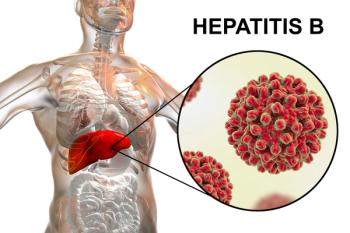
ADA 2010: Glycemic control better with a sensor-augmented pump vs multiple daily insulin injections; rate of hypoglycemia is low with the sensor
Use of a sensor-augmented pump is superior to multiple daily insulin injections in reducing glycated hemoglobin levels without an increased risk of hypoglycemia in both adults and children with type 1 diabetes who are not in good control on multiple daily injections, said Richard M Bergenstal, MD.
Use of a sensor-augmented pump (SAP) is superior to multiple daily insulin injections in reducing glycated hemoglobin levels without an increased risk of hypoglycemia in both adults and children with type 1 diabetes who are not in good control on multiple daily injections, said Richard M Bergenstal, MD.
“We are making headway into achieving our goals of better control and less hypoglycemia,” Bergenstal said.
He presented the results of a study conducted in 30 countries in which the 2 modes of glycemic control were compared in 485 patients (intent-to-treat population). The sensor also acts as a transmitter to send glucose values every 5 minutes to the pump, which delivers insulin to the patient with input from the patient.
Patients were 7 to 70 years old (mean, 32 years), had glycated hemoglobin levels between 7.4% and 9.5% (mean, 8.3%), and were being treated with at least 3 injections daily for at least 3 months. Average duration of diabetes was 10 years.
The SAP “combines the most advanced technology we have today,” said Bergenstal, executive director of the International Diabetes Center, Park Nicollet, Minneapolis, and president of medicine and science at the American Diabetes Association. Patients assigned to SAP had sequential training in the use of the pump, sensor, and the management software (both groups used management software) over 5 weeks.
The findings reported today were results from 1 year. The primary outcome, change in glycated hemoglobin level, was significantly better in the SAP group compared with the group administering multiple daily injections (declines of 0.8% vs 0.2%, respectively; P=.001).
One-year glycated hemoglobin results were superior in the SAP arm in both adults (19 years old or older) and children/adolescents (7 to 18 years old). In the adult group, mean glycated hemoglobin was 7.3% in the SAP arm versus 7.9% in the conventionally treated arm; in children/adolescents, mean glycated hemoglobin was 7.9% in the SAP arm and 8.5% in the conventional arm.
The frequency of sensor use was related to changes in glycated hemoglobin: those who used the sensor 80% or more of the time had a decline in glycated hemoglobin of a mean of 1.21%; those who used it less than 40% of the time had mean declines in glycated hemoglobin of 0.19% to 0.43%.
The rates of hypoglycemia (blood glucose 180 mg/dL) declined significantly in the SAP arm compared to the arm receiving multiple daily injections (P
Newsletter
Pharmacy practice is always changing. Stay ahead of the curve with the Drug Topics newsletter and get the latest drug information, industry trends, and patient care tips.











































































































































































































